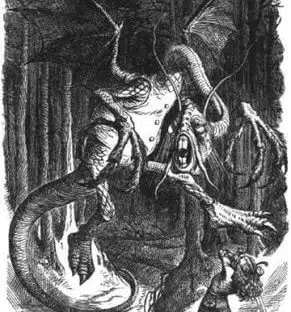
1.
What does this hypothesis mean? The Collins Dictionary distinguishes two meanings of the word “figure.” The first one focuses on a singular individual:
“Someone who is referred to as a figure of a particular kind is a person who is well-known and important in some way.”
Thus, the utterance
(a) “Adam Smith is a figure”
refers to Smith’s importance qua Smith. It is not necessary to add any attribute. Utterance (a) is simply synonymous with “Adam Smith is important.” The second meaning refers to the concept of “type:”
“If you say that someone is, for example, a mother figure or a hero figure, you mean that other people regard them as the type of person stated or suggested.”
Here, “Adam Smith is a figure” is not a complete sentence: it needs a complement, something to fill the empty space, for example: “the Classical School of Economics.” Consequently, the correct formulation, i.e. the formulation corresponding to the second meaning, would be the following:
(b) “Smith is a figure of the Classical School of Economics.”
2.
But could there be a third meaning of a “figure” which wouldn’t be confused with the importance of a singular individual or a typical character? Let’s start with this statement by philosopher George Boas:
“There emerge in all cultures certain figures who, for one reason or another, captivate the imagination of the people of that culture. These figures become national heroes, symbols of virtue, friendship, courage, self-sacrifice, wisdom.” (2)
Evidently, Boas attributes moral properties to the “figure” – here the hero. More importantly, he suggests that the works of these people who have become figures have been morally interpreted. Their ideas have been incorporated into arguments or moral narratives proposed in the public space. Here is a recent example of that phenomenon, where Adam Smith is called into contemporary debates on the functioning of the capitalist economy: “How Adam Smith would fix capitalism. Often misread as a prophet of laissez-faire, the father of modern economics would have radical remedies for the 21st century” (3). It seems that we are confronted here with a third meaning of a “figure.” But how could it be defined? Its definition would be less clear-cut than that of a “type,” which has precise contours as the class a type defines can be described using necessary and sufficient conditions. But while it is more vague, it “comes from deep layers,” to use Ernst Jünger’s words – it “comes from the undifferentiated,” from what is not yet organized by human knowledge (4). That is why Ernst Jünger said that the figure has a “metaphysical power:”
“Figure and type are the higher forms of vision. The conception of figures confers metaphysical power, the apprehension of types an intellectual power.” (5)
3.
How, then, could Adam Smith be a figure in such a “metaphysical” sense? Two reasons can be given. First, because his thought makes connections between different modes of thinking. Indeed, Adam Smith was interested in the existence of human societies and their functioning, the idea of man and his psychology, the phenomena of emergence and self-organisation. Adam Smith is often labelled as a moral philosopher and an economist, but he is mainly an unlabelled thinker. And it is precisely this “unlabelling” that helps to make him a figure in a metaphysical sense, i.e., in a sense which goes beyond conventions, beyond labelling and typification processes. The second reason why Adam Smith would be a figure in a metaphysical sense is that he sometimes opens doors without closing them. He lets us see without explaining. This is how his famous concept of the “invisible hand” operates, if at least it is taken seriously. Using Ernst Jünger’s terminology, the invisible hand could be seen as an opening towards the “undifferentiated” and the “unnamed.” Isn’t that what Smith meant by calling this “hand” invisible? (6). Perhaps all this explains why Adam Smith enters into “moral narratives,” why he is always referred to in the media, and why he is a “figure” (in a metaphysical sense). How should a figure be described in a metaphysical sense? By referring to the power enjoyed by the person in question, which concerns the way of seeing reality and the effects of this vision on our beliefs:
(c) Adam Smith is a figure because his thinking leads us to see reality before it is organised using types, and to form beliefs.
That is why being a figure in the sense (c), as Adam Smith would be, is being a great character. Alain Anquetil (1) See for instance this occurrence of “What Makes a Great President?” (2) G. Boas, “The evolution of the tragic hero,” The Carleton Drama Review, 1(1), Greek Tragedy, 1955 – 1956, pp. 5-21. (3) Financial Times, 22 June 2018. (4) E. Jünger, Typus, Name, Gestalt, Klett-Cotta, 1963. (5) It is important to note that Jünger uses the word “gestalt,” which is translated into French as “figure” and into English as “form.” The words are synonymous – in French, the expression “sous la figure de,” now little used, has the meaning: “sous la forme de” – but the “figure” is enriched by the ideas of representation, model and symbol. In what follows, I take the word “gestalt” in the sense of “figure,” as the French translator did. (6) In 2000, 210 years after Smith’s death, William Grampp wrote an article entitled “What did Smith mean by the Invisible Hand?,” in which he offered ten interpretations of it (including his own) (Journal of Political Economy, 108(3), 2000, pp. 441-465). [cite]




